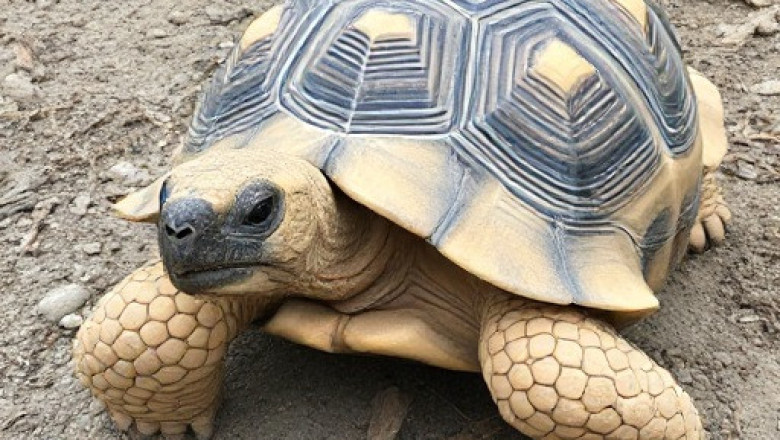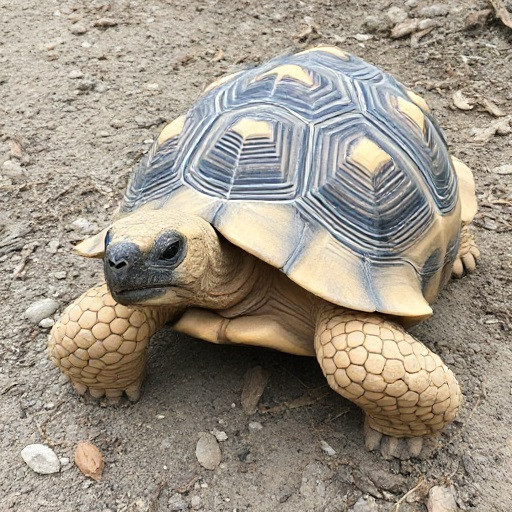
views
Sulcata Tortoise Winter Care Guide
Sulcata tortoises, also known as African spurred tortoises, are native to the hot, arid regions of Africa. As a result, they are not naturally equipped to handle cold temperatures. Ensuring your sulcata tortoise remains healthy during the winter months involves creating a warm and safe environment for them to thrive. Here’s how you can do it.
Understanding the Needs of Sulcata Tortoises
Before diving into the specifics of winter care, it’s essential to understand the basic needs of sulcata tortoises:
-
Temperature Regulation: Sulcata tortoises require a warm environment. Their ideal temperature ranges between 85°F to 95°F (29°C to 35°C) during the day, with a basking spot of up to 100°F (38°C). Nighttime temperatures should not drop below 70°F (21°C).
-
Hibernation: Unlike some tortoise species, sulcata tortoises do not naturally hibernate. Instead, they remain active year-round if provided with the right conditions.
-
Diet and Hydration: During winter, it’s crucial to maintain a balanced diet and ensure proper hydration.
Creating a Cozy Outdoor Habitat
If you live in an area with mild winters, it’s possible to keep your sulcata tortoise outdoors with proper precautions. Here are some DIY solutions to create a cozy outdoor habitat:
1. Insulated Shelter
An insulated shelter is vital to protect your sulcata tortoise from cold temperatures.
Materials:
-
Wooden or plastic shed
-
Insulation material (e.g., foam boards, straw, or hay)
-
Heat lamps or ceramic heat emitters
-
Thermostat to regulate temperature
Instructions:
-
Build or Purchase a Shelter: Start with a sturdy, weatherproof shed. Ensure it's large enough for your tortoise to move around comfortably.
-
Insulate the Shelter: Line the walls and roof with insulation material. Foam boards are effective, but you can also use straw or hay for added warmth.
-
Install Heating: Place heat lamps or ceramic heat emitters inside the shelter. Position them in a way that provides a warm basking spot while ensuring the entire shelter stays warm. Connect the heating devices to a thermostat to maintain consistent temperatures.
-
Bedding: Add a thick layer of straw or hay bedding to help retain heat and provide a comfortable resting area.
2. Heated Hide Box
A heated hide box offers an additional warm retreat within the outdoor enclosure.
Materials:
-
Wooden or plastic box
-
Heat mat or heat pad
-
Insulation material
-
Thermostat
Instructions:
-
Construct the Hide Box: Choose a box that fits comfortably within the outdoor enclosure. Ensure it has a lid or cover.
-
Add Heating: Place a heat mat or pad at the bottom of the box. Connect it to a thermostat to regulate the temperature.
-
Insulate: Line the interior of the box with insulation material to retain heat.
-
Bedding: Add straw or hay bedding for extra warmth and comfort.
3. Windbreaks and Covers
Protect the enclosure from wind and precipitation with windbreaks and covers.
Materials:
-
Tarps or heavy-duty plastic sheets
-
Wooden stakes or poles
-
Bungee cords or zip ties
Instructions:
-
Set Up Windbreaks: Erect wooden stakes or poles around the perimeter of the enclosure. Attach tarps or plastic sheets to the stakes using bungee cords or zip ties. Ensure the windbreaks are secure and cover all sides of the enclosure.
-
Cover the Enclosure: Use tarps or plastic sheets to cover the top of the enclosure, creating a roof-like structure. This will protect your tortoise from rain and snow while helping to retain warmth.
Monitoring and Maintenance
Regular monitoring and maintenance are essential to ensure your sulcata tortoise’s outdoor habitat remains warm and safe throughout the winter.
-
Temperature Checks: Use thermometers to regularly check the temperature inside the shelter and hide box. Adjust heating devices as needed to maintain the desired temperatures.
-
Inspect for Drafts: Periodically inspect the shelter and windbreaks for any drafts or gaps. Seal any openings to prevent cold air from entering.
-
Hydration: Provide fresh water daily. Consider using a heated water dish to prevent the water from freezing.
-
Diet: Continue offering a balanced diet with leafy greens, grasses, and occasional fruits. Ensure your tortoise is eating and drinking regularly.
Indoor Alternatives
If outdoor temperatures are too extreme, consider moving your sulcata tortoise indoors for the winter.
-
Indoor Enclosure: Set up a spacious indoor enclosure with proper heating and lighting. Ensure the enclosure is large enough for your tortoise to move around and explore.
-
Heating and Lighting: Use heat lamps and ceramic heat emitters to create a warm environment. Provide UVB lighting to mimic natural sunlight and support your tortoise’s health.
-
Safety and Cleanliness: Keep the indoor enclosure clean and safe. Remove any hazards and regularly clean the bedding and water dish.
Conclusion
Caring for a sulcata tortoise during the winter requires thoughtful preparation and regular maintenance. By creating a warm and cozy outdoor habitat or considering indoor alternatives, you can ensure your tortoise remains healthy and comfortable throughout the cold months. With proper care, your sulcata tortoise will thrive and continue to be a delightful companion year-round.





















Comments
0 comment